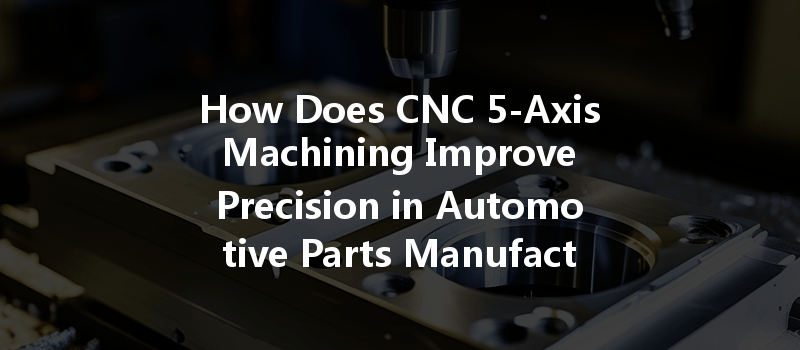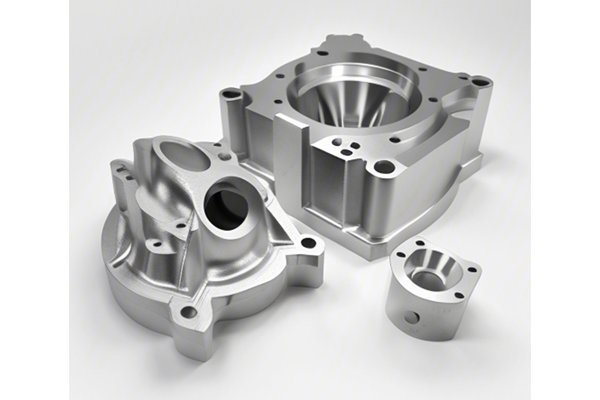Did you know that the precision of the components in your car can significantly enhance not only the vehicle’s performance but also its safety? According to a study by the National Highway Traffic Safety Administration, vehicle defects account for over 20% of all accidents. In manufacturing, especially in the automotive sector, precision is paramount. CNC (Computer Numerical Control) machining, particularly five-axis machining, has emerged as a cornerstone technology in achieving this precision.
This blog will explore the intricacies of CNC 5-axis machining and its profound impact on automotive parts manufacturing. We’ll delve into the technology, its benefits, applications, and its potential to revolutionize the industry.
What is CNC 5-Axis Machining?
CNC 5-axis machining refers to a method in which a CNC machine can move a part or cutting tool in five different axes. This capability allows for the creation of complex shapes and precise parts that would be impossible or extremely difficult to manufacture using traditional machining methods.
The Five Axes Explained:
Together, these five axes enable manufacturers to create intricate designs and achieve superior accuracy.
Why is Precision Important in Automotive Parts Manufacturing?
Precision in automotive parts manufacturing is critical for several reasons:
The Evolution of CNC Machining in Automotive Manufacturing
The automotive industry has historically relied on manual machining and simpler CNC machining methods. However, as vehicle complexity has increased—in part due to the demand for advanced technology such as electric engines and smart driving systems—the limitations of 3-axis machining became evident.
Early CNC Machining: While 3-axis machines were revolutionary, they were limited to simple designs, often requiring multiple setups to create intricate parts.
of 5-Axis Machining: The advancement to 5-axis technology allowed for more streamlined processes. Companies could produce complex components with higher precision while significantly reducing the time required for setups and post-processing.
Benefits of CNC 5-Axis Machining
Real-World Applications in Automotive Parts Manufacturing

Understanding how CNC 5-axis machining is applied within the automotive industry can provide further insight into its benefits.
Manufacturing intricate components such as engine blocks, transmission cases, and complex brackets becomes feasible. The ability to machine complex geometries in one setup is a game-changer.
Rapid prototyping of new car models enables manufacturers to test components extensively. 5-axis machining can quickly adapt to design changes, shortening the product development cycle.
Creating custom tooling and fixtures that require exact specifications benefits immensely from 5-axis machining capabilities. This level of precision is crucial for maintaining quality throughout the manufacturing process.
With the automotive industry shifting towards lighter materials for improved fuel efficiency, 5-axis machining can produce lightweight components that maintain strength, such as intricate drilled holes in assembled structures.
Case Studies: Success Stories in CNC 5-Axis Machining
Company A: Revolutionizing Engine Components
A leading automotive manufacturer implemented 5-axis CNC machining for its engine components made of titanium alloy. Prior to this, producing titanium parts was time-consuming and labor-intensive. With 5-axis technology, the company reduced production time by 30% while also boosting precision, ultimately leading to safer and more efficient engines.
Company B: Innovating Electric Vehicle Production
An emerging electric vehicle startup utilized 5-axis CNC machining for battery housing. The complex design required intricate machining due to weight distribution needs. The introduction of this technology allowed them to achieve robust structural integrity while creating lightweight components, giving them a competitive edge.
Addressing Challenges in CNC 5-Axis Machining
While the benefits of this technology are numerous, several challenges must be addressed:
Future Trends in CNC 5-Axis Machining
The landscape of CNC machining continues to evolve, spurred by technological advancements:
CNC 5-axis machining represents a transformative force in the automotive industry. Through enhanced precision, reduced production costs, and an ability to manufacture complex components, it addresses many of the traditional challenges the industry faces.
As the automotive landscape continues to evolve, manufacturers must adapt to these advanced techniques to ensure their competitive edge. Investment in CNC 5-axis technology is not just an option; it’s a necessity for those aiming to meet the growing demand for safety, performance, and sustainability.
This blog is crucial for stakeholders in the automotive industry—engineers, manufacturers, and decision-makers—to consider how CNC 5-axis machining can redefine their production capabilities and drive overall success. As technology races ahead, the question isn’t whether to adopt such advancements, but how quickly can we do so to maintain our position at the forefront of automotive innovation?






